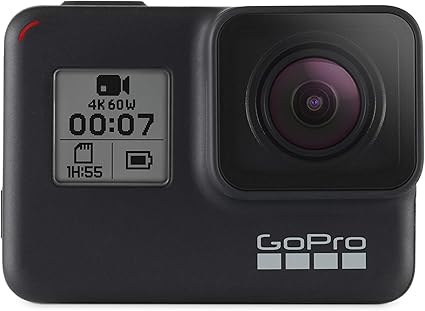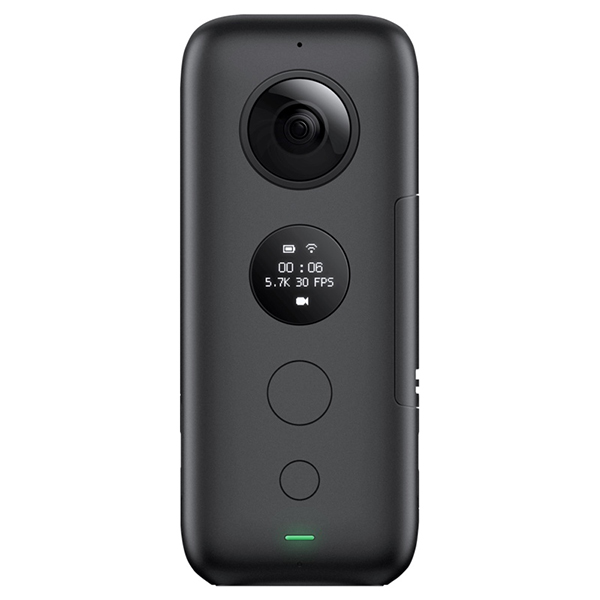This post contains affiliate links. Affiliate disclosure: As an Amazon Associate, we may earn commissions from qualifying purchases from Amazon.com and other Amazon websites.
Cameras have become a staple of the mountain bike community in the past decade. There’s barely a rider who doesn’t have one strapped to their helmet or handlebars at this point and contrary to what some may think, there are actually plenty of companies producing cameras at varying prices and with various levels of tech.
Most cameras come in one of two varieties. You’ve got the point-and-shoot, which offer some serious power and are generally the smallest, lightest cameras on the market, but at the cost of image quality and battery life. The second is the action camera, which go big on both these fronts and as a result often cost well over $1000. While many still wouldn’t have the budget for such a beast, more and more people are starting to make the jump and the decision is becoming an increasingly clear one.
We set out to understand what makes the perfect mountain biking camera and it’s taken over a year to reach this conclusion. During this time, we’ve been using the major action cameras available—those designed specific for action sports like snows ports, surfing and mountain biking—to see where they stack up in terms of form, function and performance.
How To Pick The Best Mountain Biking Video Camera?
If you prefer things to be easy you’re in luck. We’ve done all the hard work for you and every choice in the following list will serve its purpose as a serious video tool for the mountain biker.
Choosing the right action camera is the first part of the equation. For our range of options, we had to start the selection process by telling you by what type of camera you should be looking.
Should You Get A Point-and-shoot Or An Action Camera?
Point and shoots may not be the best option if you’re serious about filming your adventures, but they can still get the job done. There are various models and brands to consider if you part with the cash, but for the most part they all offer comparable performance and will be a worthy investment.
If you can stretch your budget by a little more, that’s when you’ll find the action cameras. These are the ones that are built to handle ‘action’ and offer the most features and best performance for your dollar.
Which Features To Look Out For?
Physical Attributes
Point-and-shoot cameras are small and compact so you can carry them in your jacket pocket, fit them in a bag or cycle mount. They tend to be bright and vivid with great color therefore you need to be careful of exposure accuracy. They will struggle in less-than-optimal lighting conditions.
Action cameras on the other hand are bigger than their counterparts, but usually still easy to carry. They are a little more susceptible to damage and might not be ‘everyday-use’ if you’re looking to take them to the bar or on a date. They are better in poor lighting conditions and this is why most action cameras will have their lenses protected by a generous amount of housing.
Focus & Exposure
Both types of cameras typically have some form of autofocus but some models are better at locking on to an object than others. Sometimes this is a direct result of the sensor and other times it’s the lens that’s causing the issue.
As for exposure, it’s an ongoing struggle; there isn’t a single camera that gets it spot on every time, although most are pretty close. One of the major flaws you may find with cameras is the speed. Increasing the number of megapixels tends to slow down the autofocus and in turn increases the likelihood of blurry photos.
Battery Life
In terms of battery life, it’s tricky to say whether action cameras or point-and-shoots lose out here as they each have their own limitations.
Battery life is shorter in action cameras due to their larger housing but then again you’re moving less of the underlying tech versus a point-and-shoot, which adds weight to this argument.
It’s difficult to say which is any worse here because having a removable battery is useful if you’re only planning on filming a few events and the battery is most likely to die long before that.
Video Quality & Image Stabilization
Video quality and image stabilization are areas where both point-and-shoots and action cameras finally meet on the same page. They are both fantastic image stabilization cameras.
For video quality, action cameras offer much better things to look at. They record in full HD and stills at very high resolutions. The other option is to go for cameras that use a 4K or interpolated HD technology, which basically uses the same kind of tech you’d find on your smartphone, but in an action camera design. The results aren’t quite as good, but it’s a step up from a 720p camera.
The Differences
Size
Point-and-shoot cameras are designed so that they can’t be easily damaged. They’re a bit thicker and larger than their action camera cousins, which means that they’re more difficult to mount and not really something that you would happily wear on your cycling gloves. Action cameras typically look like they can take a bump provided that you’ve got a case around them; it’s not impossible to make a point-and-shoot look rugged but a lot of manufacturers are phasing out this type of design and replacing it with smaller, more attractive options. This doesn’t mean that point-and-shoot is completely dead, but you’ll find that as action cameras get better and better, point-and-shoots will disappear altogether.
Image Quality
Point-and-shoot cameras will deliver the same image quality as action cameras now, which makes this something that you need to consider before you invest your money. Some action cameras still have a detail advantage simply because they can shoot in full HD. They will also improve in quality as companies continue to tweak their designs. The more expensive options will offer all sorts of options for streaming and user experience, file sharing and format formats, so you’ll want to be careful about what you choose. There are also some unique cameras that offer extensions like wireless connectivity and touch screens to make the user experience easier.
Battery Life
Action cameras do tend to last longer, due to their internal battery being part of their casing. But having a removable battery is a good idea if only because it means that you can carry around a spare.
Sony RX0 1.0-Type Sensor Ultra-Compact Camera
This product was recommended by Jessica Miller from Bike Inquire

Sony produces its own sensors and that means that wit the RX0, it markets a compact action camera that dwarfs the image quality of all rivals. The large 1-inch sensor can capture footage in a manner no competitor can. This Sony action camera will also shoot up to 1000fps, which unlocks an entirely new realm for producing incredible slow-motion action sequences in post-editing software. Its comparatively large sensor also means that high-contrast lighting situations are handled with aplomb. If the price is of no consequence and image quality is all you desire, it must be the Sony.
GoPro HERO7 Black Action Camera
This product was recommended by Ali Rizvi from Dream Superhero

HERO7 Black corrects for camera shake to deliver insanely smooth footage
Insta360 – OneX
This product was recommended by Gintaras Steponkus from Camera Harmony

OneX is one of the innovative products of Insta360. It is small and weighs only 115g but is a powerful tool. Regardless of its size, it can shoot with 360-degree frames and is paired with the editing apps. It has the gimbal-level stabilization and high FPS shooting modes. OneX records at 5.7K (30FPS) and captures the moments in 18MP, which is quite impressive and makes it better than other mountain biking video cameras. It comes with a selfie-stick that can be handy for getting faux-drone shots. The bad thing is that it does not have more than one hour of battery life, and you do need a separate case for making it waterproof. The 5.7K shooting and gimbal-level stability make OneX a great option, but it is expensive with the $399 price tag.
AKASO EK7000 4K WiFi Sports Action Camera
This product was recommended by Melanie Musson from BuyAutoInsurance

You will be amazed at what this camera can do for the price. It’s very affordable but it still features 4K video and high-resolution pictures. The wireless wrist remote allows the biker to capture video or pictures on the go and thanks to the wifi feature, downloads are easy. It’s waterproof and durable and comes with rechargeable batteries.
YI 4K+ Action Camera
This product was recommended by Jeremy Harrison from Hustle Life

If you’re just like me that loves hi-tech gadgets but not the high prices, then alternatives are what you’re looking for. I found the Yi Technology 4K+ action camera can do everything that its high-priced competitor can at a much lower price. The benchmark has now been raised with a 4K/60 fps resolution. I suggest you go to their website to check out discounts for an even lower price.
GO PRO MAX
This product was recommended by Noman Asghar from Fan Jackets

It’s a newer one that comprises of all qualities that should be present. This Go Pro Max is records high quality 360 videos not only static but on hilly, rough spaces and shaky environment. It can also be able to record 270 degree wide panoramic shots.


